Ankit Jain
MLLM-as-a-Judge for Image Safety without Human Labeling
Dec 31, 2024



Abstract:Image content safety has become a significant challenge with the rise of visual media on online platforms. Meanwhile, in the age of AI-generated content (AIGC), many image generation models are capable of producing harmful content, such as images containing sexual or violent material. Thus, it becomes crucial to identify such unsafe images based on established safety rules. Pre-trained Multimodal Large Language Models (MLLMs) offer potential in this regard, given their strong pattern recognition abilities. Existing approaches typically fine-tune MLLMs with human-labeled datasets, which however brings a series of drawbacks. First, relying on human annotators to label data following intricate and detailed guidelines is both expensive and labor-intensive. Furthermore, users of safety judgment systems may need to frequently update safety rules, making fine-tuning on human-based annotation more challenging. This raises the research question: Can we detect unsafe images by querying MLLMs in a zero-shot setting using a predefined safety constitution (a set of safety rules)? Our research showed that simply querying pre-trained MLLMs does not yield satisfactory results. This lack of effectiveness stems from factors such as the subjectivity of safety rules, the complexity of lengthy constitutions, and the inherent biases in the models. To address these challenges, we propose a MLLM-based method includes objectifying safety rules, assessing the relevance between rules and images, making quick judgments based on debiased token probabilities with logically complete yet simplified precondition chains for safety rules, and conducting more in-depth reasoning with cascaded chain-of-thought processes if necessary. Experiment results demonstrate that our method is highly effective for zero-shot image safety judgment tasks.
Class-RAG: Content Moderation with Retrieval Augmented Generation
Oct 18, 2024



Abstract:Robust content moderation classifiers are essential for the safety of Generative AI systems. Content moderation, or safety classification, is notoriously ambiguous: differences between safe and unsafe inputs are often extremely subtle, making it difficult for classifiers (and indeed, even humans) to properly distinguish violating vs. benign samples without further context or explanation. Furthermore, as these technologies are deployed across various applications and audiences, scaling risk discovery and mitigation through continuous model fine-tuning becomes increasingly challenging and costly. To address these challenges, we propose a Classification approach employing Retrieval-Augmented Generation (Class-RAG). Class-RAG extends the capability of its base LLM through access to a retrieval library which can be dynamically updated to enable semantic hotfixing for immediate, flexible risk mitigation. Compared to traditional fine-tuned models, Class-RAG demonstrates flexibility and transparency in decision-making. As evidenced by empirical studies, Class-RAG outperforms on classification and is more robust against adversarial attack. Besides, our findings suggest that Class-RAG performance scales with retrieval library size, indicating that increasing the library size is a viable and low-cost approach to improve content moderation.
T-HITL Effectively Addresses Problematic Associations in Image Generation and Maintains Overall Visual Quality
Feb 27, 2024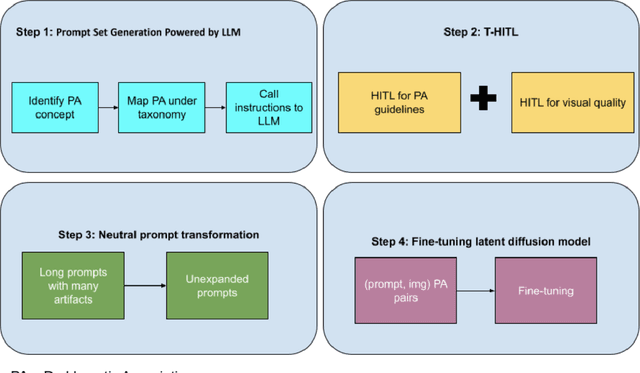

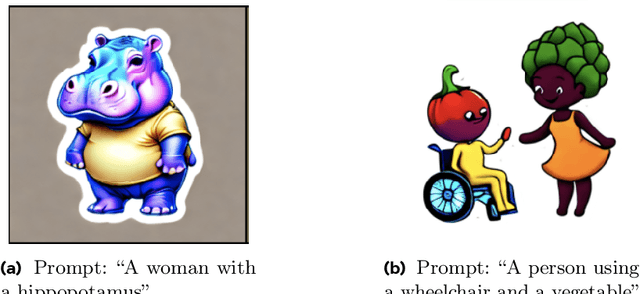

Abstract:Generative AI image models may inadvertently generate problematic representations of people. Past research has noted that millions of users engage daily across the world with these models and that the models, including through problematic representations of people, have the potential to compound and accelerate real-world discrimination and other harms (Bianchi et al, 2023). In this paper, we focus on addressing the generation of problematic associations between demographic groups and semantic concepts that may reflect and reinforce negative narratives embedded in social data. Building on sociological literature (Blumer, 1958) and mapping representations to model behaviors, we have developed a taxonomy to study problematic associations in image generation models. We explore the effectiveness of fine tuning at the model level as a method to address these associations, identifying a potential reduction in visual quality as a limitation of traditional fine tuning. We also propose a new methodology with twice-human-in-the-loop (T-HITL) that promises improvements in both reducing problematic associations and also maintaining visual quality. We demonstrate the effectiveness of T-HITL by providing evidence of three problematic associations addressed by T-HITL at the model level. Our contributions to scholarship are two-fold. By defining problematic associations in the context of machine learning models and generative AI, we introduce a conceptual and technical taxonomy for addressing some of these associations. Finally, we provide a method, T-HITL, that addresses these associations and simultaneously maintains visual quality of image model generations. This mitigation need not be a tradeoff, but rather an enhancement.
End-to-end Material Thermal Conductivity Prediction through Machine Learning
Nov 06, 2023



Abstract:We investigated the accelerated prediction of the thermal conductivity of materials through end- to-end structure-based approaches employing machine learning methods. Due to the non-availability of high-quality thermal conductivity data, we first performed high-throughput calculations based on first principles and the Boltzmann transport equation for 225 materials, effectively more than doubling the size of the existing dataset. We assessed the performance of state-of-the-art machine learning models for thermal conductivity prediction on this expanded dataset and observed that all these models suffered from overfitting. To address this issue, we introduced a novel graph-based neural network model, which demonstrated more consistent and regularized performance across all evaluated datasets. Nevertheless, the best mean absolute percentage error achieved on the test dataset remained in the range of 50-60%. This suggests that while these models are valuable for expediting material screening, their current accuracy is still limited.
Modelling Social Context for Fake News Detection: A Graph Neural Network Based Approach
Jul 27, 2022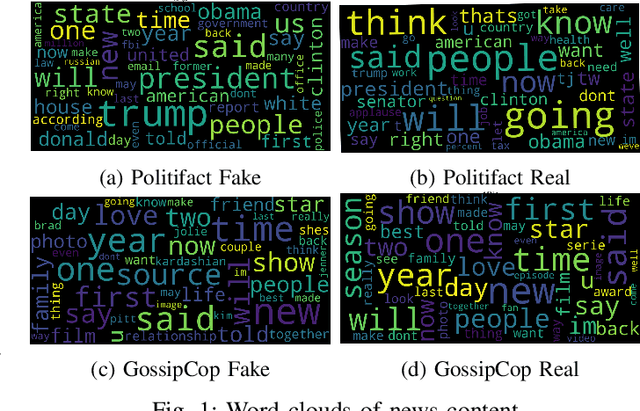
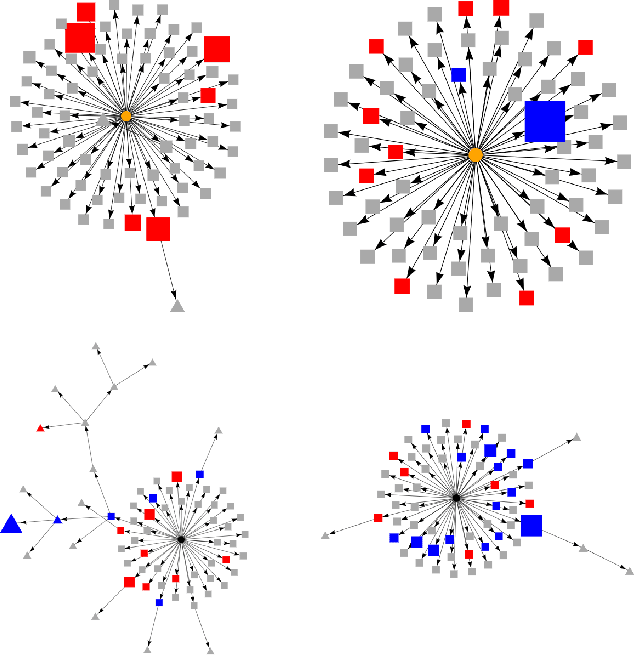
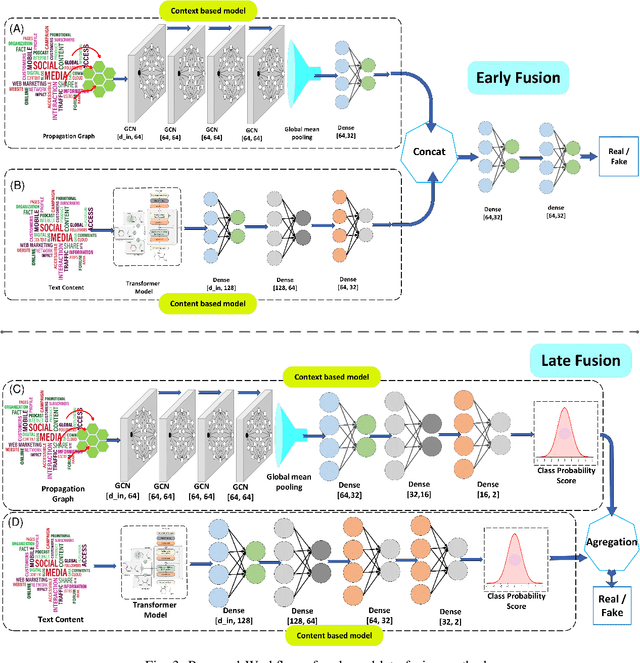

Abstract:Detection of fake news is crucial to ensure the authenticity of information and maintain the news ecosystems reliability. Recently, there has been an increase in fake news content due to the recent proliferation of social media and fake content generation techniques such as Deep Fake. The majority of the existing modalities of fake news detection focus on content based approaches. However, most of these techniques fail to deal with ultra realistic synthesized media produced by generative models. Our recent studies find that the propagation characteristics of authentic and fake news are distinguishable, irrespective of their modalities. In this regard, we have investigated the auxiliary information based on social context to detect fake news. This paper has analyzed the social context of fake news detection with a hybrid graph neural network based approach. This hybrid model is based on integrating a graph neural network on the propagation of news and bi directional encoder representations from the transformers model on news content to learn the text features. Thus this proposed approach learns the content as well as the context features and hence able to outperform the baseline models with an f1 score of 0.91 on PolitiFact and 0.93 on the Gossipcop dataset, respectively
Estimating Q(s,s') with Deep Deterministic Dynamics Gradients
Feb 21, 2020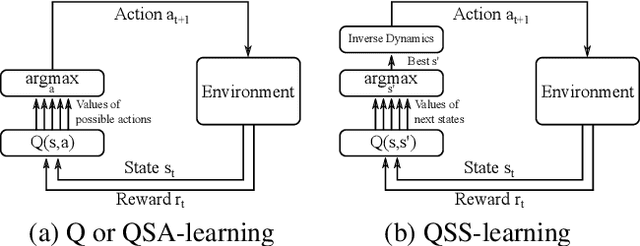

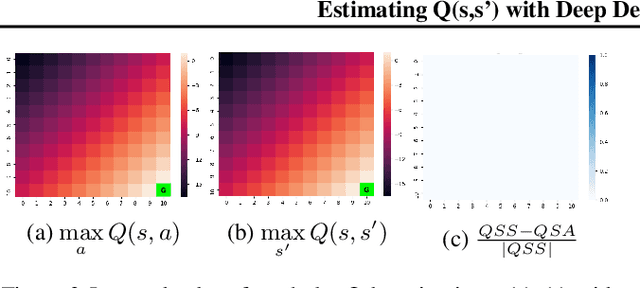
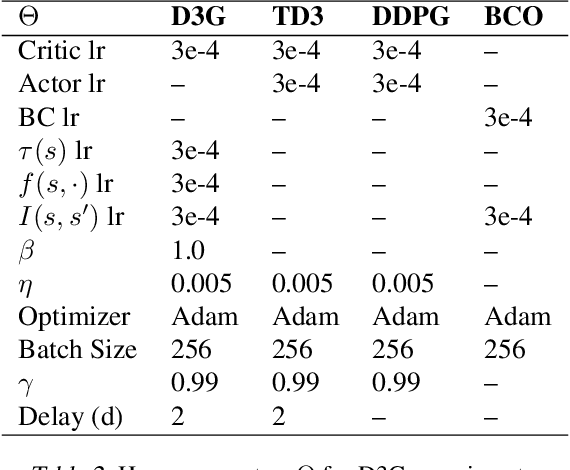
Abstract:In this paper, we introduce a novel form of value function, $Q(s, s')$, that expresses the utility of transitioning from a state $s$ to a neighboring state $s'$ and then acting optimally thereafter. In order to derive an optimal policy, we develop a forward dynamics model that learns to make next-state predictions that maximize this value. This formulation decouples actions from values while still learning off-policy. We highlight the benefits of this approach in terms of value function transfer, learning within redundant action spaces, and learning off-policy from state observations generated by sub-optimal or completely random policies. Code and videos are available at \url{sites.google.com/view/qss-paper}.
Meta-Graph: Few shot Link Prediction via Meta Learning
Dec 20, 2019
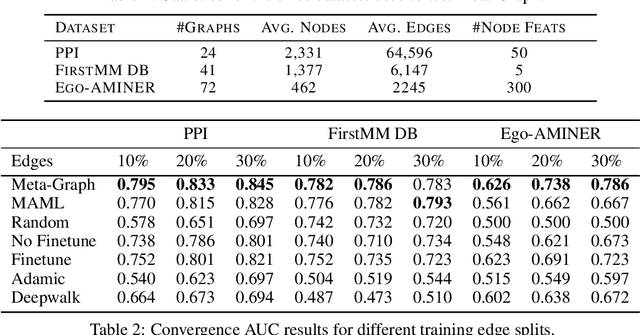
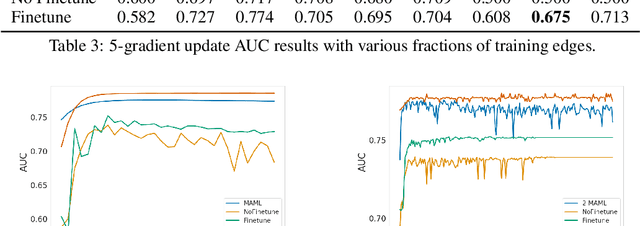

Abstract:Fast adaptation to new data is one key facet of human intelligence and is an unexplored problem on graph-structured data. Few-Shot Link Prediction is a challenging task representative of real world data with evolving sub-graphs or entirely new graphs with shared structure. In this work, we present a meta-learning approach to Few Shot Link-Prediction. We further introduce Meta-Graph, a meta-learning algorithm which in addition to the global parameters learns a Graph Signature function that exploits structural information of a graph compared to other graphs from the same distribution for even faster adaptation and better convergence than vanilla Meta-Learning.
 Add to Chrome
Add to Chrome Add to Firefox
Add to Firefox Add to Edge
Add to Edge